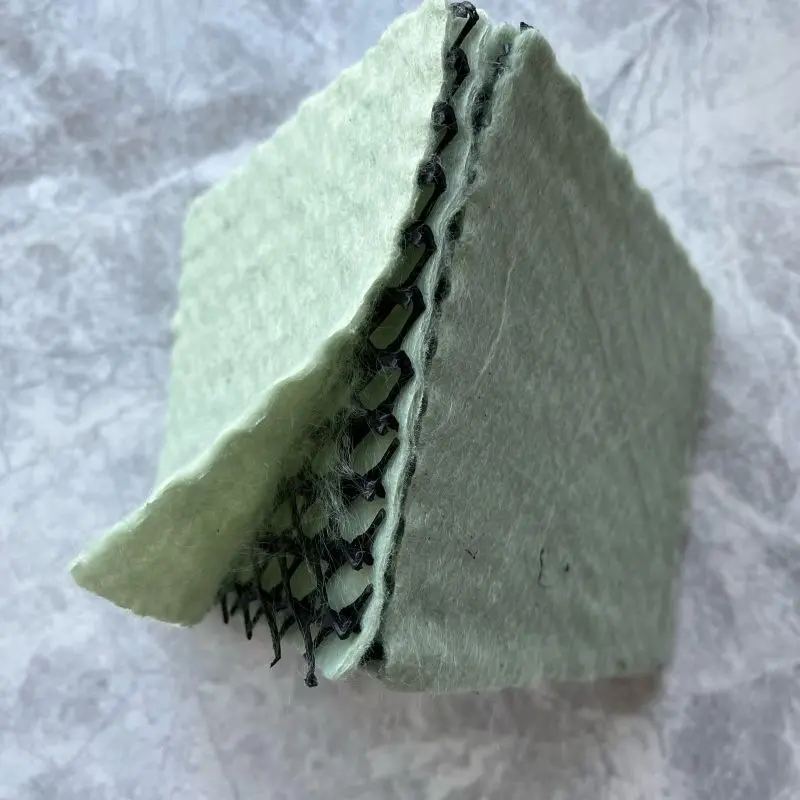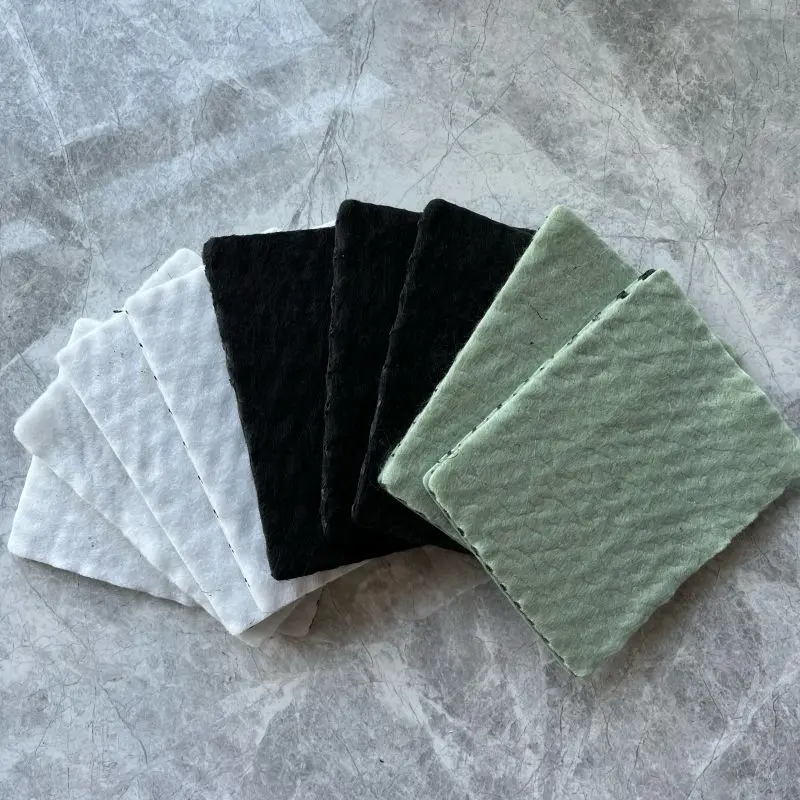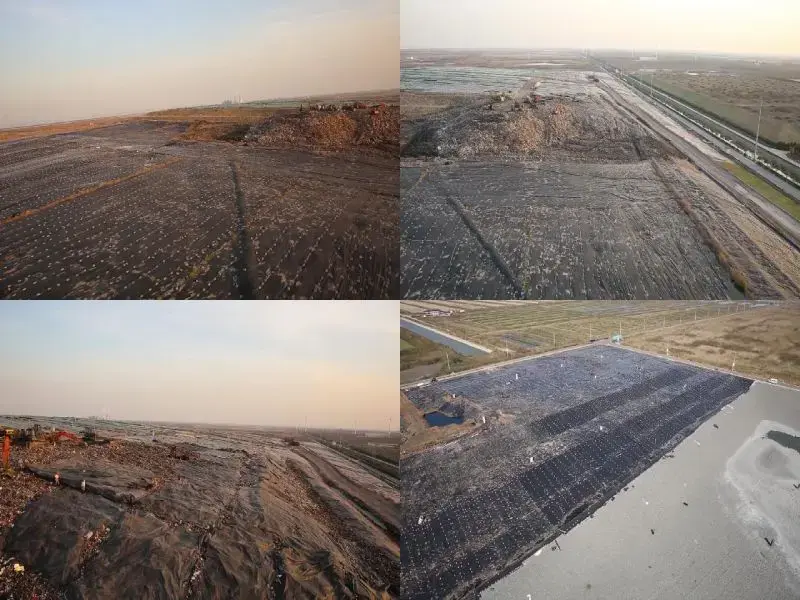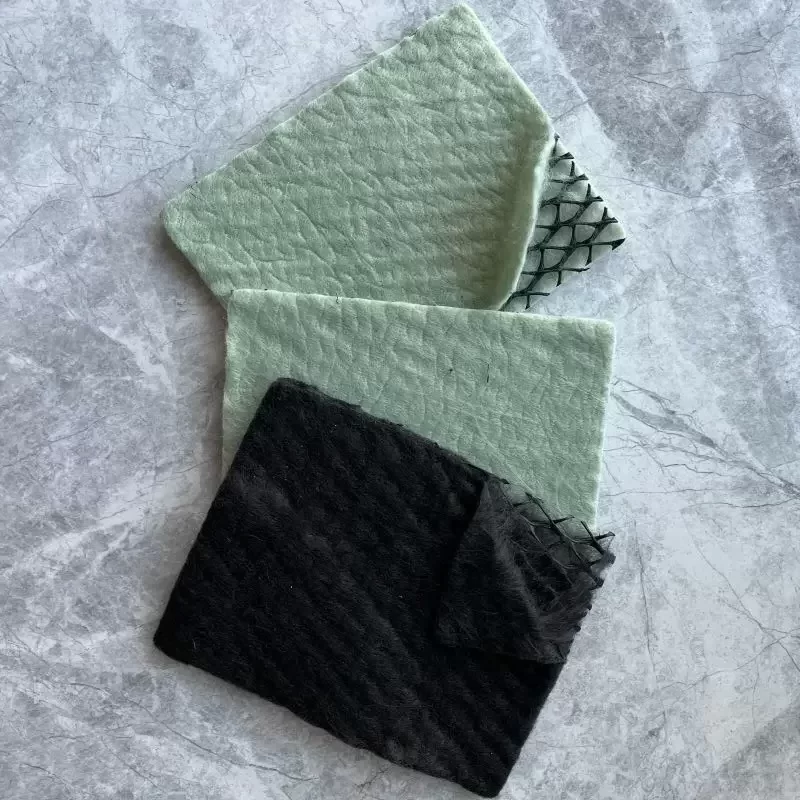What is three-dimensional composite geosynthetic drainage net

The three-dimensional composite drainage net is a novel geosynthetic material. Its composition consists of a three-dimensional geogrid core with needle-punched nonwoven geotextiles attached on both sides. The three-dimensional geogrid core includes a thick vertical rib and one inclined rib each at the top and bottom. It can rapidly drain underground water from roads and has a pore maintenance system that can block capillary water under high loads. Additionally, it serves as isolation and foundation reinforcement, providing complete filtration, drainage, and protection effects. There are various three-dimensional composite geosynthetic drainage nets on the market, with different prices. Choosing the right drainage nets can bring out their best advantages and is very important for your project.
Advantages of three-dimensional composite geosynthetic drainage net
1, Efficient Water Drainage: Its three-dimensional structure allows for rapid drainage of water from the surface, preventing waterlogging and soil erosion.
2, Enhanced Load Bearing Capacity: The thick vertical and inclined ribs provide structural support, enabling the drainage net to withstand high loads without deformation.
3, Clogging Prevention: The needle-punched nonwoven geotextiles on both sides of the geogrid core prevent clogging, ensuring continuous and efficient water flow.
4, Versatility: It can be used in various applications such as road construction, landscaping, and foundation reinforcement, offering versatile solutions for different engineering projects.
5, Isolation and Reinforcement: The drainage net can isolate different soil layers and reinforce the foundation, improving the stability and longevity of structures.
6, Long-lasting Performance: Its durable materials and design contribute to long-term performance, reducing maintenance needs and ensuring cost-effectiveness over time.
Only three-dimensional composite geosynthetic drainage nets of good quality can bring out their greatest advantages, so we must choose manufacturers with good reputations.
Main application area
The main application areas of a three-dimensional composite drainage net include:
1, Road Construction: It is commonly used in roadways, highways, and pavements to provide effective drainage and prevent water accumulation, which helps in maintaining the integrity and longevity of road surfaces.
2, Landfill and Environmental Remediation: In landfill construction and environmental remediation projects, the drainage net facilitates leachate collection and management, helping to prevent groundwater contamination and environmental hazards..
3, Foundation Drainage: The drainage net is installed around building foundations and basements to mitigate hydrostatic pressure, prevent water infiltration, and protect structures from moisture-related damage.
4, Sports Facilities: It is used in the construction of sports facilities like soccer fields, tennis courts, and golf courses to ensure proper drainage, preventing water accumulation and maintaining optimal playing conditions.
5, Infrastructure Development: The drainage net plays a vital role in infrastructure development projects such as railways, airports, and ports, where effective water management is crucial for safety and structural integrity.
6, Agriculture and Irrigation: In agricultural applications, the drainage net assists in managing soil moisture levels, preventing waterlogging, and improving crop yield by ensuring proper drainage in fields and irrigation systems.
Different application fields have different requirements for drainage net. Before choosing a geocomposite drainage net, thoroughly assess the specific requirements of your project. Understanding the unique demands of your site lays the foundation for selecting a drainage net that aligns with the project's goals.
How to choose three-dimensional composite drainage net

The three-dimensional composite drainage network is a geological material used for groundwater drainage and soil protection. Choosing the right three-dimensional composite drainage network requires consideration of several factors:
1, Drainage Performance: The primary function of the three-dimensional composite drainage network is drainage, so drainage performance is one of the key factors in selection. Consider the permeability, drainage rate, and anti-clogging ability of the drainage network to ensure effective drainage and prevent soil erosion.
2, Materials: Drainage networks are typically made of materials such as polypropylene (PP), polyethylene (PE), or polyester (PET). When selecting materials, consider their corrosion resistance, aging resistance, and compatibility with soil and water.
3, Strength and Stability: The drainage network needs to have a certain strength and stability to withstand groundwater pressure, soil loads, and forces during construction. Therefore, choose a drainage network with sufficient strength and stability to ensure that it does not deform or damage during use.
4,Environmental Adaptability: The drainage network should have good environmental adaptability to adapt to different geological environments and climatic conditions. Consider factors such as UV resistance, high temperature resistance, and frost resistance to ensure that it can work normally under various environmental conditions.
5, Ease of Installation: The installation of the drainage network should be simple and convenient, and it should be able to adapt to surfaces of different shapes and sizes. Choose a drainage network that is easy to install and operate to reduce construction time and costs.
6, Price and Cost-effectiveness: Consider the price of the drainage network and comprehensively consider factors such as performance, durability, and service life to choose a product with good cost-effectiveness. Don't just look at the price; consider its actual value and long-term benefits in the project.
7, Manufacturer: Choose a drainage network manufacturer with a good reputation and rich experience to ensure product quality and perfect after-sales service. References from other users and recommendations can help choose a reputable manufacturer.
The fabric is usually designed to be 200 grams, with a distinction between long fibers and short fibers; the core thickness ranges from 5mm, 6mm, 7mm, to 7.6mm. The selection process is typically based on design standards and budget considerations. By considering the above factors comprehensively, you can choose the right three-dimensional composite drainage net to ensure smooth project implementation and long-term stable operation.
Construciton attentions

It does not mean that everything will be fine after choosing a suitable composite geosynthetic drainage net. We also need to pay attention to the following matters during construction:
1, The composite geosynthetic drainage net must be butt-jointed, with the geotextile on adjacent geogrid cores overlapped along the material roll.
2, Connect the geogrid cores of adjacent geotextile rolls with white or yellow plastic clips or polymer straps to join the material rolls. Along the length direction of the material roll, connect with straps every 3 feet.
3, The direction of overlapped geotextiles should be consistent with the direction of fill placement. If the geosynthetic material is laid between the subgrade/base course and subbase course, continuous wedge welding, flat head welding, or stitching should be performed to secure the overlapped geotextile. If stitching is used, flat head stitching or general stitching is recommended to meet the minimum stitch length requirement.
The basic requirements for laying geocomposite drainage nets the water flow direction of the geocomposite drainage net is longitudinal (along the length direction of the material roll), and the geocomposite drainage net must be laid along the direction of water flow in the length direction. If there is wind, all composite geosynthetic drainage materials must be weighted down with sandbags or similar heavy objects. Corresponding measures should be taken for construction in heavy rain weather after confirmation by the supervisor. The surface of the geocomposite drainage net must be free of oil stains, fuel, or chemical splashes. Plastic clips are used to connect the geosynthetic drainage net, and welding or stitching is used for the geotextile. The stitching thread must be made of material identical to or exceeding the quality of the geotextile.
Only by choosing the right 3D composite geosynthetic drainage nets and strict construction can the performance and advantages of 3D composite geosynthetic drainage nets be maximized.
FAQ
1, What factors should I consider when choosing a three-dimensional composite geosynthetic drainage net?
Factors to consider include drainage performance, material durability, strength, environmental adaptability, ease of installation, and cost-effectiveness.
2, How do I determine the appropriate thickness of the geosynthetic drainage net for my project?
The thickness of the drainage net should be selected based on design standards, project requirements, and budget considerations.
3, Can you explain the significance of choosing the right material for the geosynthetic drainage net?
Choosing the right material ensures resistance to corrosion, aging, and compatibility with soil and water, which are crucial for long-term performance and effectiveness.
4, What role does the manufacturer's reputation play in selecting a geosynthetic drainage net?
A reputable manufacturer ensures product quality, reliability, and after-sales support, which are essential for successful project implementation and performance.
5, How can I ensure proper installation of the three-dimensional composite geosynthetic drainage net?
Proper installation involves following design guidelines, ensuring correct placement and connection of the net, and adhering to recommended techniques for securing and sealing the installation.

897.webp)
942.webp)
237.webp)